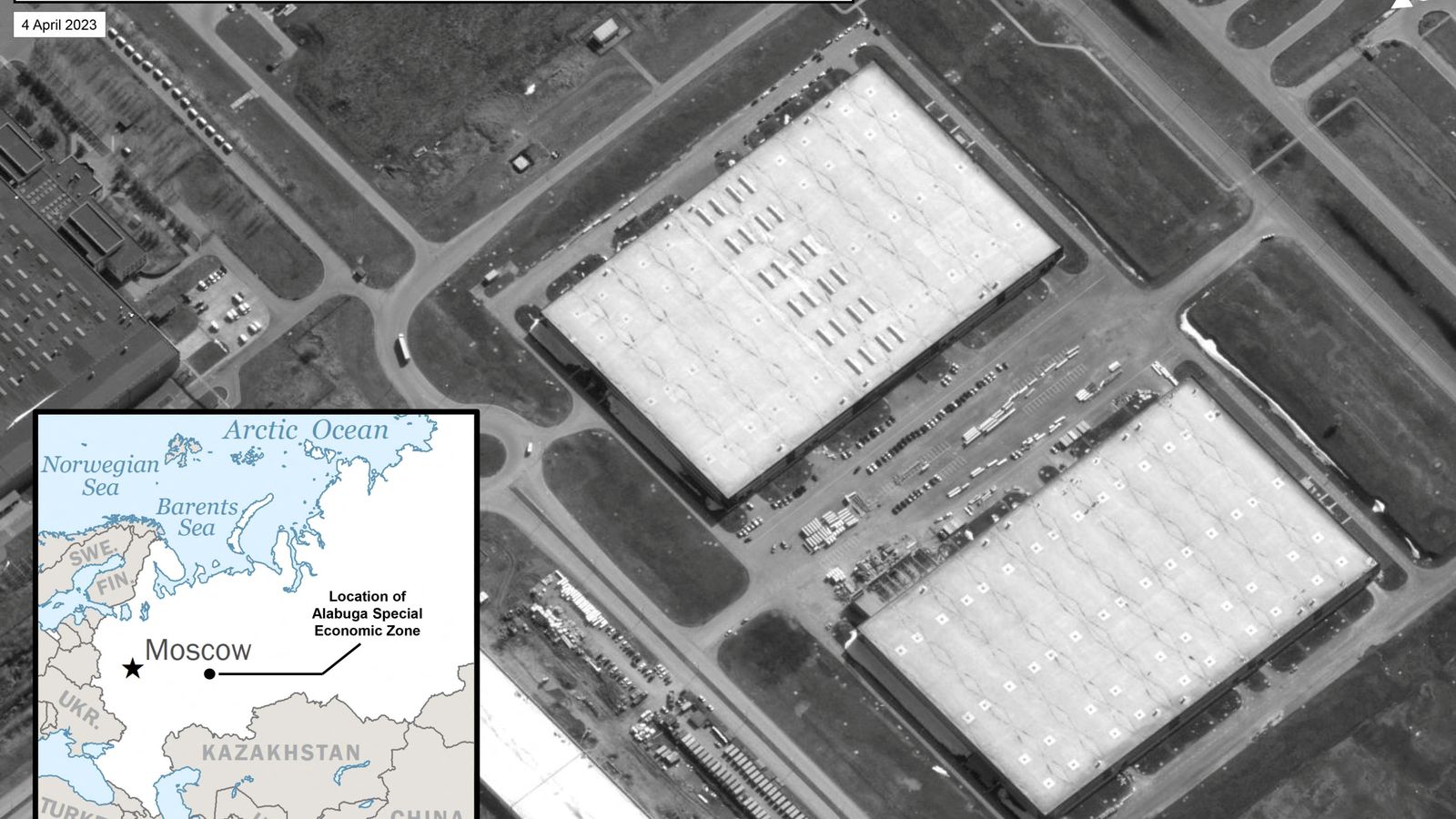Iran has been supplying Russia with materials to build a drone manufacturing plant that could be fully operational by early next year, the White House has said.
National Security Council spokesman John Kirby added that the White House is releasing satellite imagery of the “planned location” of the manufacturing plant in Russia’s Alabuga Special Economic Zone.
Mr Kirby also said Moscow appears to be deepening its defence cooperation with Iran and had received hundreds of one-way attack drones that it is using to strike Ukraine.
The White House cited newly-declassified information as it said the drones, or Uncrewed Aerial Vehicles (UAVs), were built in Iran, shipped across the Caspian Sea and then used by Russian forces against Ukraine.
Mr Kirby said: “Russia has been using Iranian UAVs in recent weeks to strike Kyiv and terrorize the Ukrainian population, and the Russia-Iran military partnership appears to be deepening.
“We are also concerned that Russia is working with Iran to produce Iranian UAVs from inside Russia.”
Russia and Iran ‘sending weapons in both directions’
British Foreign Secretary James Cleverly said the government agrees with the “US assessment”, and added: “Iran has provided Russia with a consistent stream of weapons and ammunition which is being used to kill civilians in Ukraine.
“In return, Russia is supplying Iran with sophisticated military technology, financial support and advice which the regime could use to threaten our partners in the Middle East and suppress protests.
“The UK and our partners have already sanctioned many of those responsible for this deadly trade in weapons and will continue to hold this desperate alliance to account.”
The US has previously sanctioned Iranian executives at a defence manufacturer over drone supplies to Russia.
Iran has acknowledged sending drones to Russia but said in the past they were sent before the invasion of Ukraine started.
Moscow has denied its forces used Iranian drones in Ukraine.
‘Unprecedented cooperation’
Mr Kirby made similar claims to Mr Cleverly that support between Iran and Russia has flowed both ways.
He said Iran has sought billions of dollars worth of military equipment from Russia, including helicopters and radars.
“Russia has been offering Iran unprecedented defence cooperation, including on missiles, electronics, and air defence,” he said.
“This is a full-scale defence partnership that is harmful to Ukraine, to Iran’s neighbours, and to the international
community.
“We are continuing to use all the tools at our disposal to expose and disrupt these activities including by
sharing this with the public – and we are prepared to do more.”
Mr Kirby said the transfers of drones constituted a violation of United Nations rules and the United States would seek to hold the two countries accountable.
Read more:
Contract shows ‘Iran has sold Russia ammunition for war’
Secret journey of cargo ships accused of supplying invasion
Russia ‘flew €140m in cash to Iran in return for deadly drones’
Please use Chrome browser for a more accessible video player
Sanctions effort to stop UN deal ‘violation’
Britain, France, Germany, the US and Ukraine say the supply of Iranian-made drones to Russia violates a 2015 UN
Security Council resolution enshrining the Iran nuclear deal.
Under the 2015 UN resolution, a conventional arms embargo on Iran was in place until October 2020.
Ukraine and Western powers argue that the resolution includes restrictions on missiles and related technologies until
October 2023 and can encompass the export and purchase of advanced military systems – such as drones.
The Iranian and Russian missions to the United Nations did not immediately respond to a request for comment on the US accusations.
Mr Kirby said: “We will continue to impose sanctions on the actors involved in the transfer of Iranian military equipment to Russia for use in Ukraine.”
He said new US advice issued on Friday aimed “to help businesses and other governments better understand the risks posed by Iran’s UAV program and the illicit practices Iran uses to procure components for it”.
The advisory highlighted key items sought by Iran for its development of drones, including electronics such as processors and controllers.







